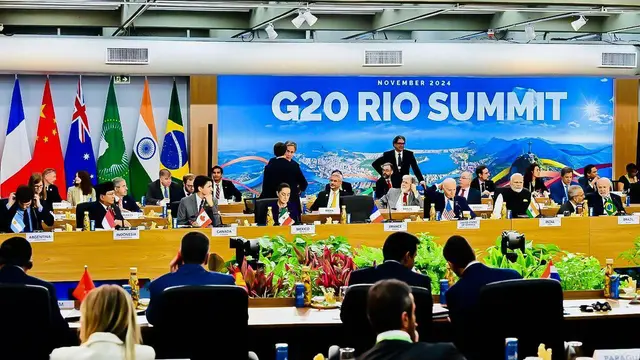The thickness of the ice in the Jayawijaya Mountains, Central Papua, continues to drastically decrease, and based on observations by the Meteorology, Climatology, and Geophysics Agency (BMKG), it is currently estimated to be only four meters thick.
The Coordinator for Standardization of Climatology Instruments at BMKG, Donaldi Sukma Perman, said that the estimated ice thickness of only four meters was obtained based on measurements of the stakes planted at the Sudirman Peak in the Jayawijaya Mountains.
“Recently, there were 14 stakes that had been exposed, meaning the glacier thickness is estimated to be only four meters,” he said in Jakarta, Monday (2/12/2024).
The thickness of the ice has significantly decreased compared to previous BMKG measurements, which were 32 meters in 2010 and 5.6 meters between mid-November 2015 and May 2016. “This is also caused by the strong El Niño that occurred at that time,” he said, as quoted by Antara.
In addition, he explained that the survey results conducted in November 2024 showed a drastic decrease in the ice surface area at Puncak Sudirman. The ice area shrank to 0.11 – 0.16 square kilometers from the previous year, where the ice area was recorded at around 0.23 square kilometers in 2022.
The thinning of the ice thickness and weather dynamics pose unique challenges for the joint survey team between BMKG and PT Freeport Indonesia in measuring the ice on the world’s seventh highest peak.
The team, which has been conducting intensive surveys since 2010, was previously able to freely measure by tracking or flying using helicopters and landing on the ice surface. However, since 2017, they have relied on visual image analysis and the observation of stake presence to measure ice thickness.
“But this survey will continue to be conducted to document the ice in Papua, which is already at a stage where it is difficult to maintain,” he said.
Evidence of Real Climate Change

BMKG considers the melting of ice in the Jayawijaya Mountains to be one of the concrete pieces of evidence of climate change, which is now making the Earth warmer.
Referring to data from the Greenhouse Gas Informative Subfield of BMKG, it is known that the global temperature rise is currently accelerating, reaching an increase of 1.45 degrees Celsius above the pre-industrial average. In Indonesia, the average temperature rise is 0.15 degrees Celsius per decade.
Coordinator of the Greenhouse Gas Informative Sub-Field at BMKG, Albert C. Nahas, stated that the rate of increase was found in the regions of Kalimantan, southern Sumatra, Jakarta and its surroundings, northern Sumatra, then in the Papua Mountains, and also a small part of Sulawesi.
According to him, if we look at the historical temperature and project it into the future with a simplification of 0.15 degrees per 10 years, by the mid-21st century, Indonesia will have exceeded the 1.5-degree threshold that is often used as a benchmark for climate change mitigation and adaptation.






Leave a Reply